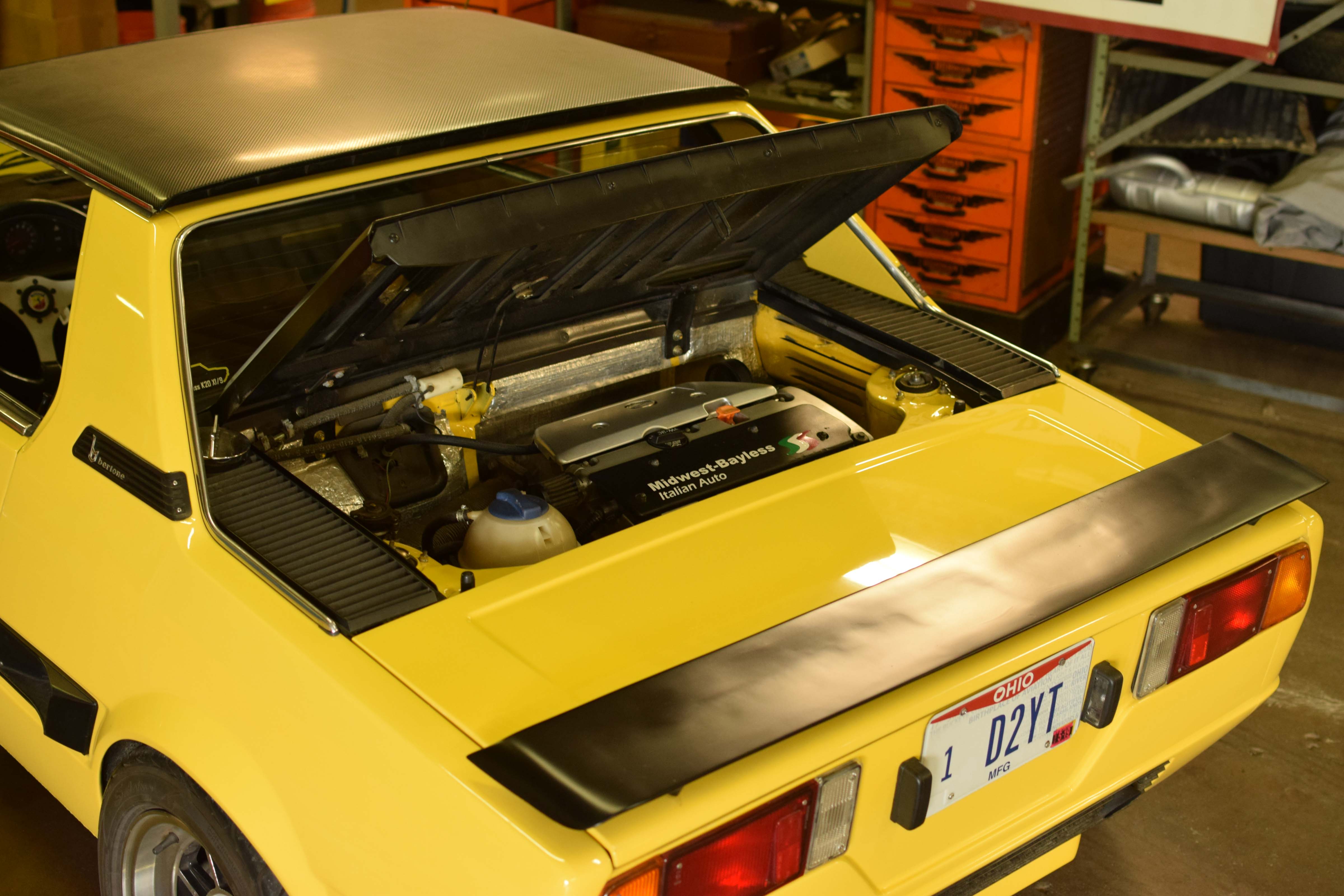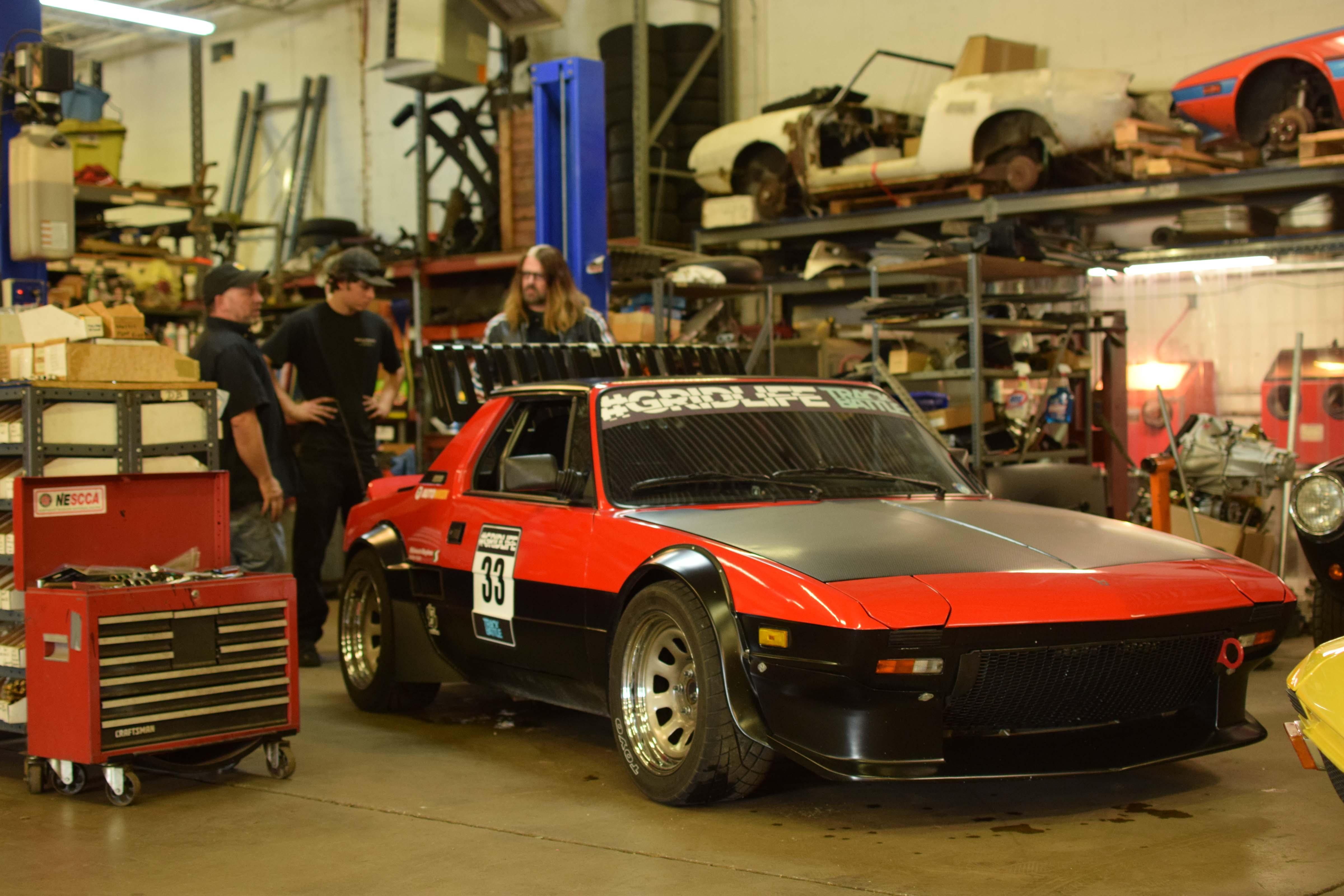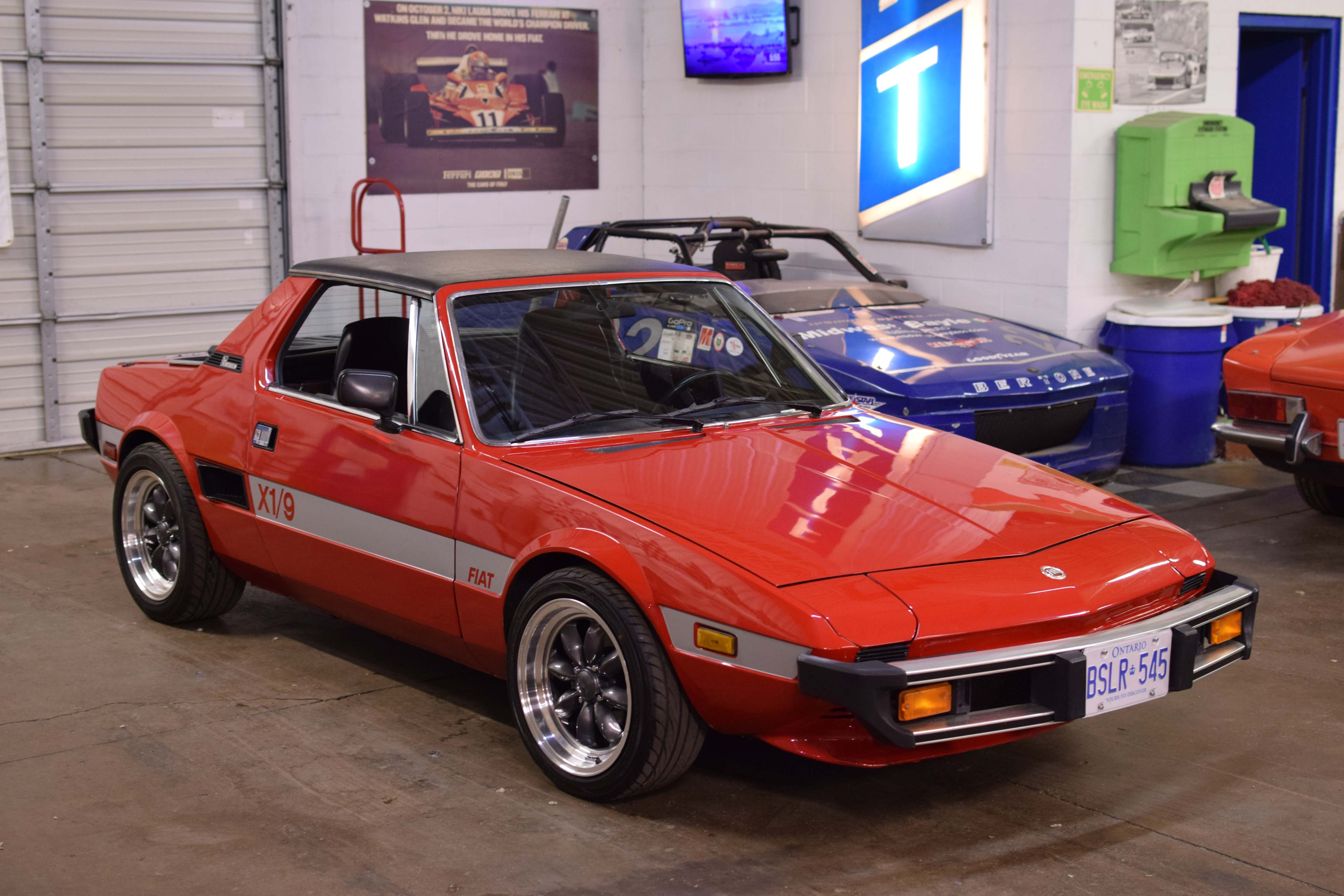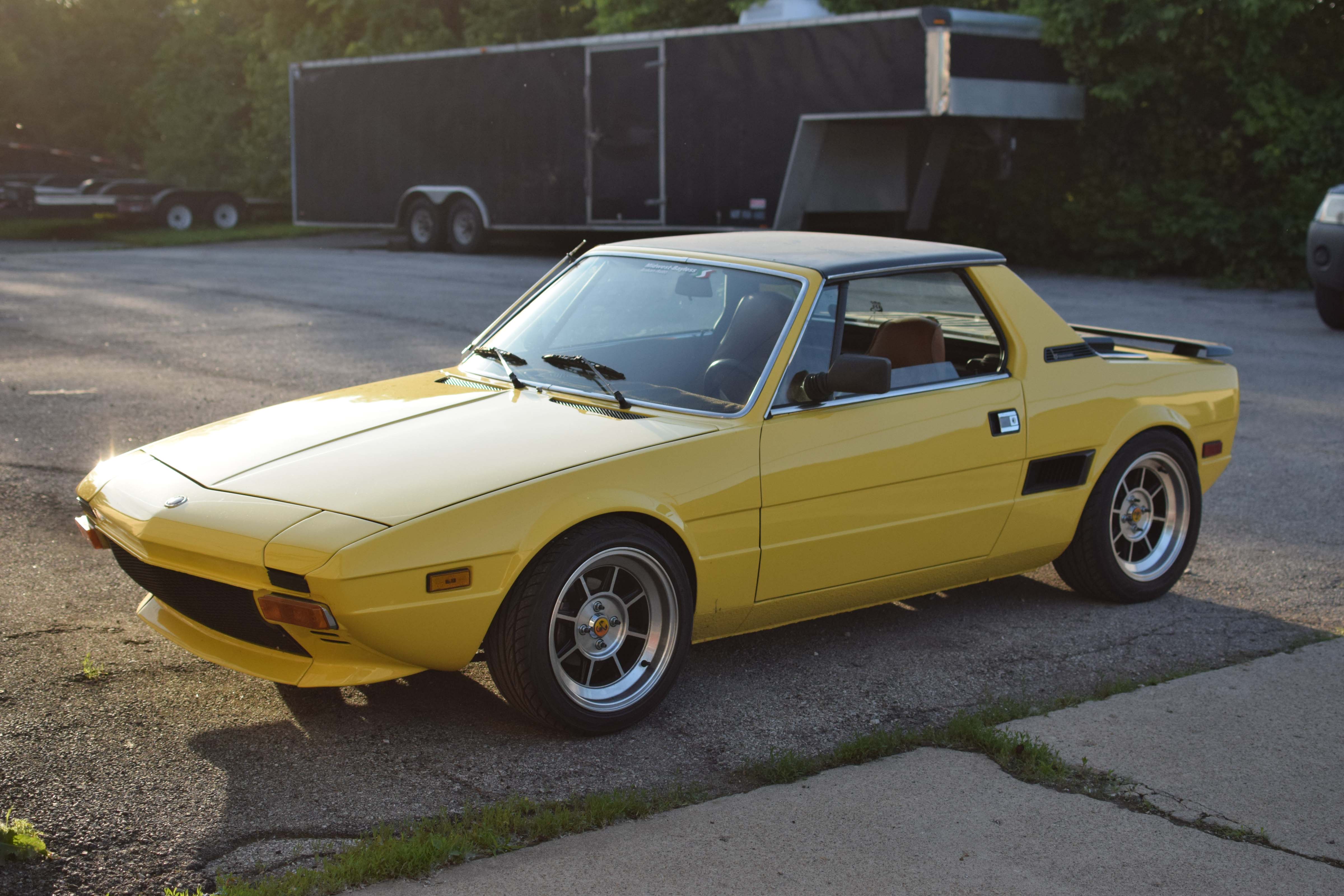Midwest-Bayless Fiat X1/9: 220 horses worth of Vitamin K
“Whoa… you’re really taking this Bertone thing seriously.” It was the only thing I could think to say when I saw Matt Brannon’s Fly Yellow Ferrari 308 GT4 parked at the entrance of his shop. It’s a recent purchase—Matt says it was “too good of an opportunity to give up”—but it’s also an entirely appropriate way to celebrate the multiple success of the Midwest-Bayless shop in Columbus, Ohio, on and off the racetrack.
Bannon founded the business 15 years ago as Midwest X1/9. “It was just a way to pay for racing,” he says with a laugh. Both he and his wife, Marnie, have run tuned-up H-Production X1/9s at the SCCA Runoffs, with Matt scoring two podium finishes. In 2009, the Bannons acquired Bayless, a well-known Fiat parts warehouse. Its stock of parts for 124 Spiders and X1/9s is exhaustive and includes many new-old-stock parts that were originally delivered to Malcolm Bricklin decades ago.
The combined operation, known as Midwest-Bayless, is now a key source for Fiat owners in the United States, with its open-house get-togethers drawing fans and customers from across the country on a regular basis. Marnie is unsentimental about the fact that the shop relies on “back-of-house” operations to survive: “The parts business is the side that makes money. People call from all over the world and hit us with questions regarding Fiat and Lancia stuff, sometimes some pretty obscure parts or service requests. We have yet to be stumped. We live and breathe this stuff, you know.” The office features two microfiche viewers to complement a comprehensive collection of original drawings and diagrams.



While it is an extraordinary and surprisingly humbling experience to hold a factory-sealed bag with a 45-year-old taillight in it, I’m not at Midwest-Bayless to audit its inventory. I’m set to experience the ’70s-era X1/9 that is parked next to Matt’s Dino, painted a very similar color and styled in that same folded-paper manner. Restored to like-new condition, but marked with one important difference: In place of the 1300cc or 1500cc SOHC four-cylinder that was fitted new, there’s a red-headed Honda K20 VTEC twin-cam, twisting the back wheels through a six-speed manual transaxle taken from an Acura TL Type-S.
“Most people,” Matt says, “had been asking us to put a lot of blood, sweat, and tears into swapping in Lancia Beta or Scorpion twin-cam motors into the X1/9. And the result would be a pretty expensive and relatively heavy 120-ish horsepower. But with the Honda K20 motor, not only would it fit better than anything else and have the best aftermarket support, but you could get well over 200 horsepower with relative ease. We stopped brainstorming after that.” The X1/9 shell accepts the K20 with ease; it’s about the same size as the original single-cam Fiat engine and only six or seven pounds heavier, a potential performance problem that is easily overcome by the Honda mill’s ability to deliver approximately 220 horsepower to the rear wheels, compared to the between 61 and 75 horses at the crank offered from the factory.
Most of the K20 engines fitted by Midwest-Bayless are sourced from the Acura RSX Type-S. A Hondata ECU tune increases the power and allows a screaming 9000-rpm redline. The difference in performance after the engine swap is so profound that Matt strongly suggests the fitment of a race-style suspension. “Otherwise,” he notes, “you’re just pushing the nose out of the turn faster.”

The X1/9 that I’m scheduled to drive was one of the first conversions performed by the firm; after four years with its first owner, it was traded back in so its owner could pursue additional projects. It’s in the process of being completely refreshed, after which the shop will ask in the neighborhood of $35k. That makes it a relative bargain, since Matt quotes “between $30k and $40k” for conversions on “clean, straight” X1/9 donors. The price is steep, almost double the Hagerty #1 value for the X1/9 1500. But this is more than just a quick engine swap; donor cars are taken down to the frame and rebuilt as part of the process. Think of it as a rotisserie-style restoration, with the supercar-level power-to-weight ratio thrown in for free.
As you’d expect from a Honda engine, the K20 catches on the first crank and in a matter of moments I’m driving a short test loop through downtown Columbus. The first surprise: by modern standards, this is still a spacious car on a thoroughly human scale. There’s more elbow room here than you’d get in a new Ferrari 488GTB. The chassis is firm and composed over broken pavement, with zero cowl shake despite the open space over my head. This is a by-product of Bertone’s concerns about Seventies-era crash testing in the United States market, as is the rock-solid roll structure between the driver and the engine.
At a curb weight well below one ton, the X1/9 doesn’t need power steering or boosted brakes—which is good, because this one doesn’t have either. The high-quality feedback from both steering wheel and center pedal is addictive, even in small doses. If you’ve been driving a late-model sports car, even a Miata, this will feel like you’ve just taken off a thick set of winter gloves and boots.

To understand why Midwest-Bayless has sold 10 complete K20 conversions and nearly two dozen do-it-yourself kits, it’s necessary to point that wedgy nose at an empty road and floor the throttle. The response is strong and impressive to begin with, not that dissimilar from a new Alfa 4C with the boost turned up, but as the cams undergo the VTEC changeover the mood changes quickly from “quick car” to “superbike that is about to lift the front wheel.” The accompanying noise is omnipresent, terrifying, thrilling. Just a few seconds of this is sufficient to violate any speed limit in the fifty states.
It would be difficult to overstate the effect of this engine swap. Think AC Ace to Shelby 289 Cobra—or maybe it’s closer to what happened when the P-51 Mustang replaced its Allison wheezer with the Rolls-Royce Merlin. It’s easy to imagine this little X1/9 staying with a Ferrari 360 or 430 through the quarter-mile. The K20 conversion is absolutely undetectable from the outside except by sound, making this a drag-race sleeper for the cognoscenti and a brilliant way to knock that Mustang next to you at the stoplight down a couple of pegs.


As you’d expect from a family of SCCA racers, the Brannons have also developed a track-focused version of the conversion, with much of the work being done by their teenaged son, Brayden. Starting with a $500 shell, Brayden has assembled a roll cage-equipped, flared-fender X1/9 with a variety of go-fast equipment both inside and out. He’s also the development driver for the car, having already obtained both his racing license and an OVR-SCCA Novice Driver of the Year award. “The K20 swap will get young people interested in this car,” he predicts, and it’s difficult to disagree.
Right now, however, it’s mostly the Baby Boomers who are stepping up. “Our typical buyer,” Matt says, “is someone who might have owned an X1/9 when it was new. Maybe he wanted one but couldn’t afford it. So now he’s going to make that dream come true—but he wants to be able to merge into traffic without panicking. And he’s willing to spend money to have it done right.” After driving one of his conversions, it’s hard to argue with the idea. Think of it as a pocket supercar. Like a miniature Ferrari 308GT4, perhaps. But faster. A lot faster.












That’s a helluva lot of lancia spiders in one shot
That’s a power to weight ratio I can only dream about with a stock X1/9.